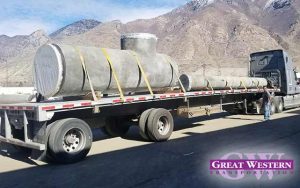Moving heavy machinery or equipment requires skill, knowledge, and experience. Additionally, you also need to take necessary precaution to guard against the risks of causing accidents while in transit when transporting heavy construction or manufacturing equipment. Failure to adhere to set standards regarding securing heavy loads among other things makes you liable to an offense. Additionally, you put the lives of other road users at risk if you do not observe the rules of transporting heavy machinery.
Therefore, observing best practices when moving heavy machinery is critical for safe delivery of such equipment from one point to the next. Here are some of the aspects you need to consider to get to your destination safely when transporting heavy machinery.
Proper Securing of Accessories It is not prudent to move construction equipment without securing every accessory of the machine you are transporting. Therefore, ensure that you lower all heavy equipment accessories on the vehicle you are using and tie each of these tightly. If you are moving heavy machinery with locking pins on some of the accessories you do not need to use additional securing devices. You only need to ensure that the tie downs are holding the heavy equipment firmly in place on the vehicle.
Choose The Right Transportation Vehicle As you prepare to move heavy machinery, it is necessary to identify the right vehicle for the type and size of load you want to transport. The critical considerations when selecting a truck to move heavy machinery include the height and width of the truck.
By opting for a heavy hauling vehicle with the right width and height, you will understand the distance you need to maintain between the truck and other motorists. You will also have a better understanding of the correct height depending on the overhead bridges you expect to find along the way when you choose the right vehicle.
Adherence to Inspection Requirements When moving manufacturing machinery from one destination to another, the expectation is that you will encounter checkpoints at particular locations on the way. Heavy vehicles go through checkpoints to verify their compliance with the set rules and regulations regarding moving heavy machinery. As such, you should comply with all the requirements of transporting heavy equipment for your safety and that of other road users.





